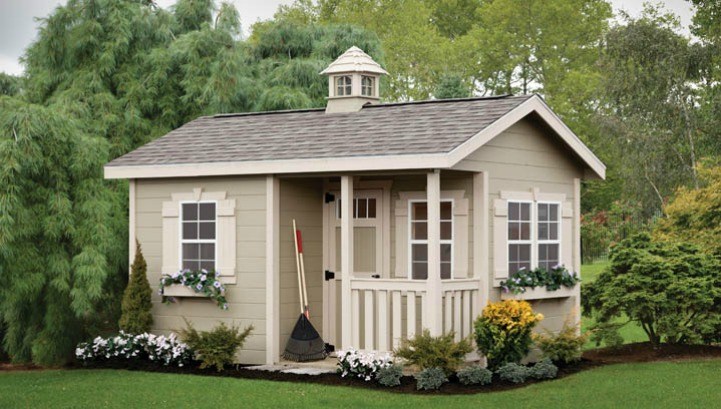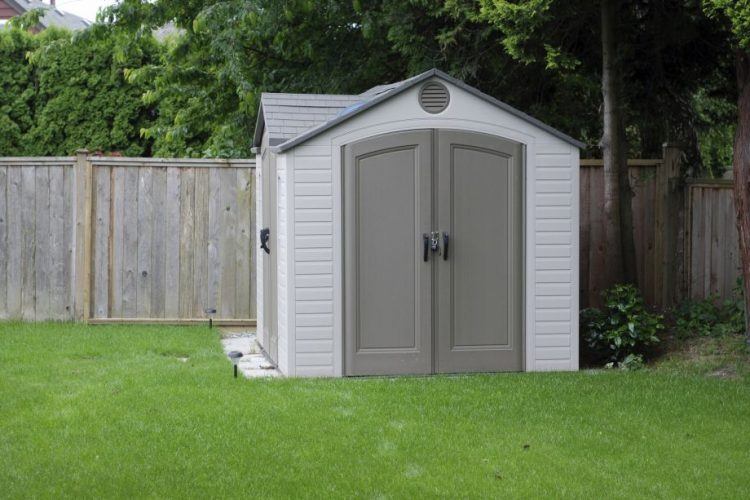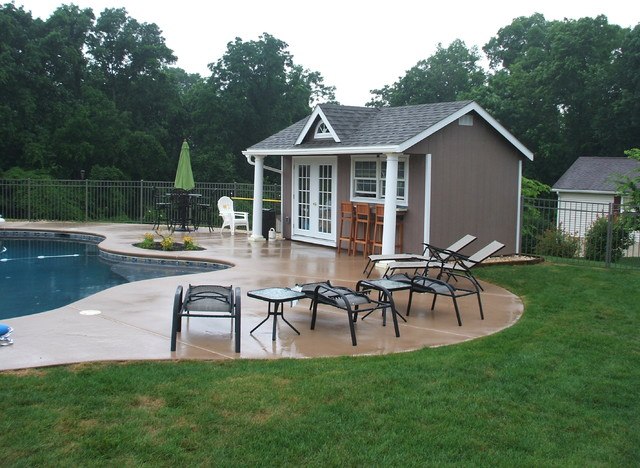
Once you are really bitten by the gardening bug, you may find that you are swimming in yard tools from shovels to saws to shears to sprayers. Throwing this essential equipment into the yard or into your newly budding dahlias will not do the trick. Therefore, you need a storage space for all of your equipment, tools and other accessories. A shed is the best option as it can look beautiful in the yard while still maintaining functionality. There are two options; you can choose to do-it-yourself (DIY) or purchase a pre-made shed. In either case, you have taken the first step. The next step is to choose the right backyard shed for your home.
Step One: DIY versus Professional
This first step immediately determines your options with regards to size and budget. The DIY option tends to be much smaller in size and considerably less expensive than pre-made models or those that require a professional installation. If you opt for a professional install, make sure to request a quote from a licensed contractor prior to making the purchase. The process is similar when renovating the house or doing any other type of contract work. There are many big box home improvement stores that sell prefabricated sheds while also offering installation services.
Step Two: Determine the Size
You must realistically select the size of the shed based on your personal needs. If you have a small yard and only a few tools then a giant shed is not necessary and vice-versa. The dimensions of the smallest available sheds are around 3 x 7-feet. This allows for just enough room for all essential gardening tools, a wheelbarrow and a push mower but little work space. Medium sheds, with dimensions around 10 x 10, can accommodate the entire range of garden supplies as well as a riding lawn mower. This also allows you enough space for small projects. The largest sheds range from 15-to-20 x 20-to-40-feet. This size will require a large yard and professional installation but also allows for more storage and the ability to work on large projects.
One tip when estimating the size of the shed, move all of the tools you plan to store in the shed into your driveway and position them in the exact way they would fit in your shed. Use a tape measure to calculate the length and width of your tool collection then add a foot or two to each measurement to determine your sizing requirements.

Step Three: Selecting the Material
In the prefabricated shed world, you only really have a few options including wood, metal and vinyl resin. Wood and resin are the most durable but wood requires more maintenance than the others but resin is pretty much maintenance-free. Wood does provide the aesthetic appeal of a rustic and quaint look while being easy to shingle and pain. Wood also attracts bugs and chips easily whereas metal and resin do not. Although not the prettiest, metal sheds are lightweight and easy to assemble without the need to paint or spray for bugs. Modern steel sheds, which replaced tin and aluminum, are rust-resistant.
Step Four: Select the Style
If you choose to build your own shed, you have the flexibility of styling it any way you see fit. However, for pre-fabricated models, there are many different types of styles that mimic homes from which to choose but you are limited by the imagination of the designer.
Antique Saltbox
The Saltbox style roofline has a 9-inch pitch but the roofing extends farther on the back of the building. Shed sizes range from small-to-medium.
American Classic
This budget-fitting style is the ideal solution for utility shed and backyard storage. The American Classic is simply a small house with two windows, two doors on the front and small flower pots below the windows. Shed sizes range from small-to-medium.
Country Cottage
Following the classic horse and carriage houses from the 19th century the offset roof creates a protective overhand along the front wall. Sizes range from small-to-medium.
Hip Style Sheds
The Hip Style features a 4-sided roof slope which ideal for having a unique structure in your backyard and neighborhood. The roof overhangs for protection on all four sides and features a generous pitch for appearance. This style is best for medium-to-large shed requirements.
Historical Colonial
Offering a traditional design of the American Classic with a steeper roof, the Historical Colonial is modeled after many New England homes and the perfect style to match your home. Sizes range from small-to-medium.
Providence Carriage House
Providence Carriage House sheds offer a distinctive upscale storage solution that can complement your home. The structure aesthetically looks like an authentic carriage house with a distinct door and window design. The most effective size for this house is large.
Traditional Gambrel
The Traditional Gambrel is the best option to maximize storage space with its barn style roof offering the most headroom. The best sizes for this style are medium-to-large.
Victorian
The Victorian features a steep roof pitch to maximize overhead space and the roof overhands the sides for appealing shadow lines and protection. Sizes range from small-to-medium.

Step Four: Choose the Brand
There are numerous brands available with the best being: Leisure Season, Arrow Shed, Rubbermaid, 2×4 Basics, Suncast, Lifetime and Bosemere. Each of these brands are leading the industry but also have their pros and cons to consider.
Step Five: Accessories for your Shed
The final step is to select available accessories for your shed. Adding a ramp will certainly make your life easier, especially if you use a large amount of wheeled equipment like carts, mowers and wheelbarrows. Also, adding shelves can considerably increase the storage potential. For the medium and large sheds, a durable workbench is an excellent addition for hobby projects. If you plan to keep tools in the shed, adding a pegboard might be a good option to organize screwdrivers, hammers, rakes and other types of construction and gardening tools.
If you have an existing shed, depending on its condition, it is typically better to demolish it. The cost to refurbish and renovate a shed is almost the same as purchasing and installing a new shed. However, if you like to fix and build structures, then use the aforementioned styling list as a target for a new design.


One Ping
Pingback:A Guide to Choosing or Creating The Right Backyard Shed